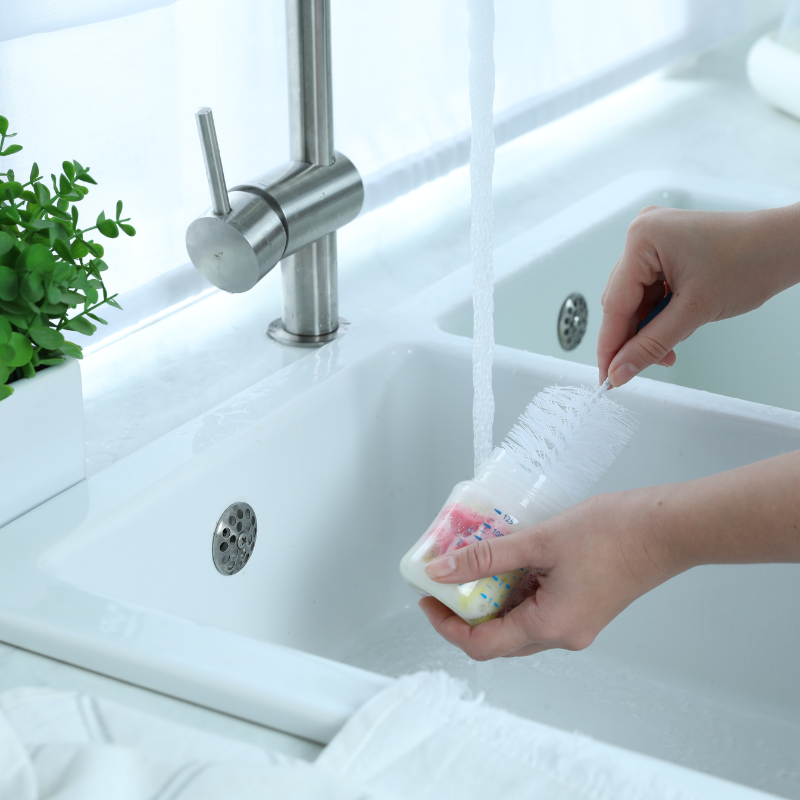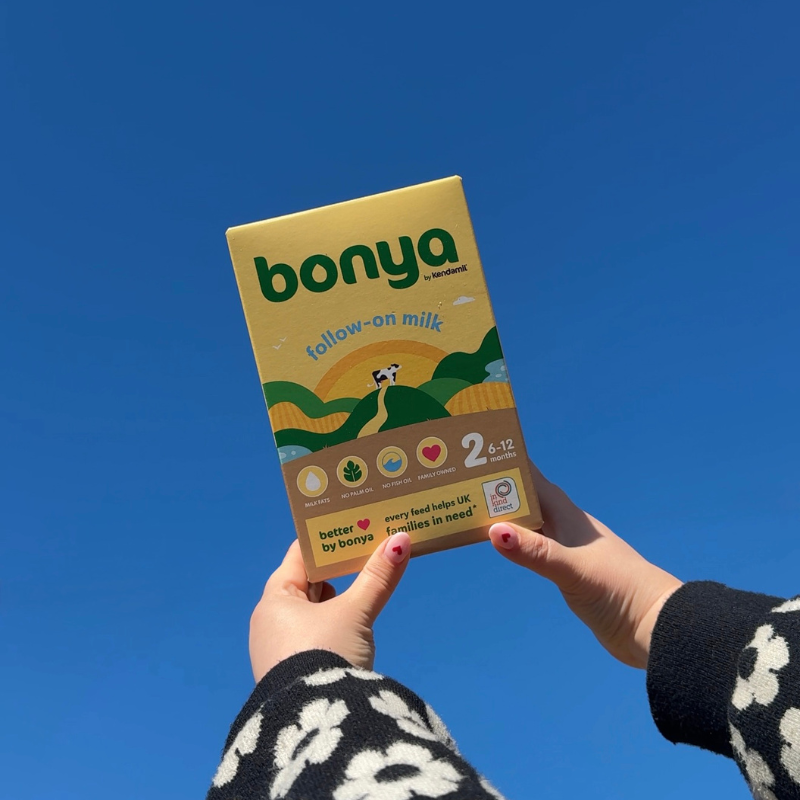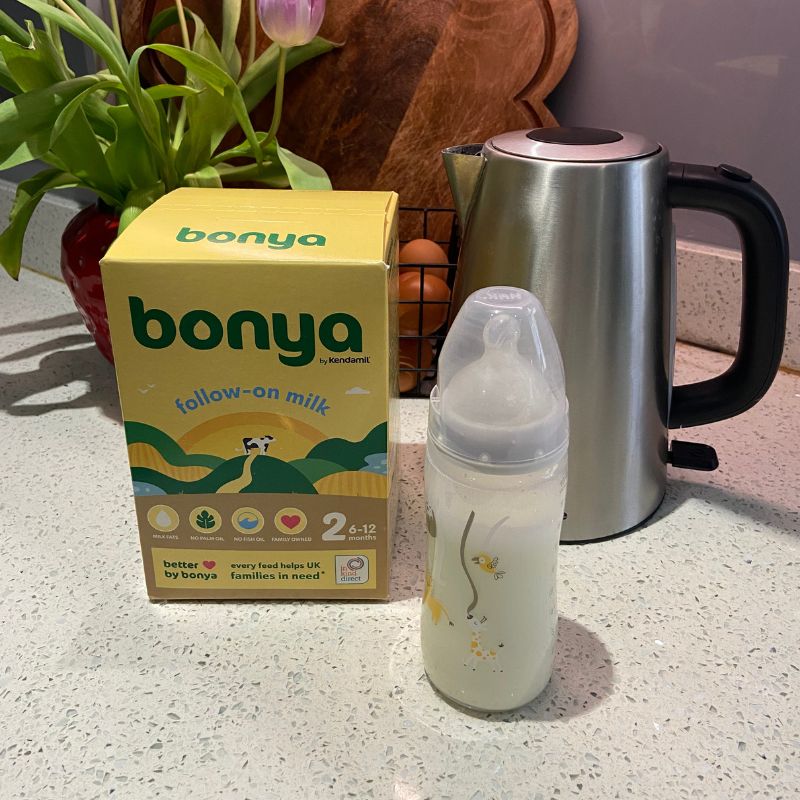Thinking about switching your baby's follow-on formula? We're here to help. In this guide, we'll answer your most common questions, share our best tips for a successful switch, and help you navigate any bumps you can expect along the way.
What are the signs it's time to switch my baby's formula?
Let’s face it, no matter how hard we try to keep our little ones happy, their tummies are still maturing, so a bit of fussiness is pretty normal in those early days. Just like us, babies have their own quirky tastes and texture preferences too (tiny food critics in the making!). That’s why some babies simply vibe better with a different formula. If you’re worried baby’s formula is making them constipated, or could be giving them reflux, do book in for a visit with your GP before making a switch.
At Bonya, our milk magicians have crafted a recipe packed with all the nutrition your baby needs, while avoiding unnecessary ingredients. Bonya is made with real milk fats and a plant-based DHA instead of fish oil, no fishy smell, no fishy taste, just all the good omega 3 stuff they need. You also won’t find palm oil, or sneaky ingredients like maltodextrin in Bonya.
What are the different types of follow-on formula available?
All formulas sold in the UK are safe and nutritionally complete. We have a strict set of guidelines to follow. Here at Bonya we pride ourselves on providing parents with a formula option that is not only made with quality ingredients, but is great on price! We’re one of the cheapest options on the shelf yet we offer so much more than most.
Baby follow-on formula brands comparison

Maybe you’re looking for an easier way to stock up on your formula more easily? If this is the case, you should check out our subscription service! Simply head to the Bonya product page, click the Subscribe & Save option, choose the quantity of formula you want delivered monthly, and we’ll ship them straight to your door each month, with free delivery! We’re also available in most supermarkets including Morrisons, Tesco, ASDA, Sainsbury’s as well as retailers such as Boots and Ocado.
How to switch baby formula brands
Before you jump into switching your baby’s formula, it’s always a good idea to chat with a healthcare professional first—just like the NHS recommends. They’ll help make sure any changes suit your baby’s unique needs, especially if there are any health concerns or sensitivities to consider. Switching things up too quickly can sometimes do more harm than good, so a slow and steady transition is the way to go. Once you’ve got the thumbs up from your healthcare provider, you’re all set to begin the switch with confidence and care.
Baby formula transition tips:
Best way to switch baby formula
When it comes to changing your baby’s formula, slow and steady wins the race. Switching too quickly can sometimes upset their sensitive tummies, so a gradual approach is your best bet. Start by swapping just one feed a day with the new formula, and stick with that for a day or two. Then, slowly increase the number of feeds with the new formula each day. Over the course of several days to a week, your little one should ease into the new routine comfortably—and before you know it, they'll be fully transitioned!
When to switch baby formula?
Before making any changes, it’s super important to check in with your health visitor or healthcare professional. Sometimes tummy troubles or fussiness can be caused by other things like allergies or minor health issues that aren’t actually linked to the formula. It’s always worth exploring all the possibilities first, just to be sure you’re heading in the right direction.
How long does it take to transition baby formula?
Every baby is different, so the switch might take anywhere from a week to two weeks—or even a little longer. The key is to go at your baby’s pace and try to choose a time when things are calm and you’re not juggling a million other things. That way, you can keep an eye on how they’re doing and give them all the cuddles and comfort they need during the transition.
Side effects of switching baby formula
All UK baby formulas are safe for your little one, so there’s no need to worry too much when making a switch. That said, it’s always good to keep an eye out for any tummy changes listed below. These are usually just temporary as your baby’s digestive system gets used to the new formula. But if you notice anything worrying or if your baby seems extra uncomfortable, don’t hesitate to reach out to your midwife, health visitor, or GP.
Stool Changes: You might notice some changes in your little one’s stools—colour, consistency, and even how often they go. While it can be a little uh-oh moment for parents, don't stress! It's usually just their tummy adjusting to the new formula.
Gas and Bloating: Some little ones might experience a bit of gas or bloating when switching formulas. You can help ease their discomfort with simple tricks like tummy massages and bicycle legs movements.
Spitting Up: Spit-up happens, and it’s totally normal for babies. You might see a bit more of it during the transition to a new formula, but don’t worry—it’s usually temporary. As they adjust, the spit-up should chill out.
Fussiness: A little fussiness is part of the gig when transitioning to a new formula. After all, change can be a big deal, even for the tiniest humans! Just load them up with extra cuddles and snuggles, and they’ll be feeling more like themselves in no time.
All UK baby formulas are safe, so no need to stress when switching things up! By taking your time with the transition and gradually introducing the new formula, your baby will be enjoying their new favourite milk in no time. If anything seems off or you're not sure if the switch is going well, don’t hesitate to reach out to your midwife, health visitor, or GP.
For any questions about Bonya or additional tips on switching over, don't hesitate to reach out to our customer service team, made up of parents like you! Your baby's health and well-being are our top priorities, we've got your back every step of the way!











